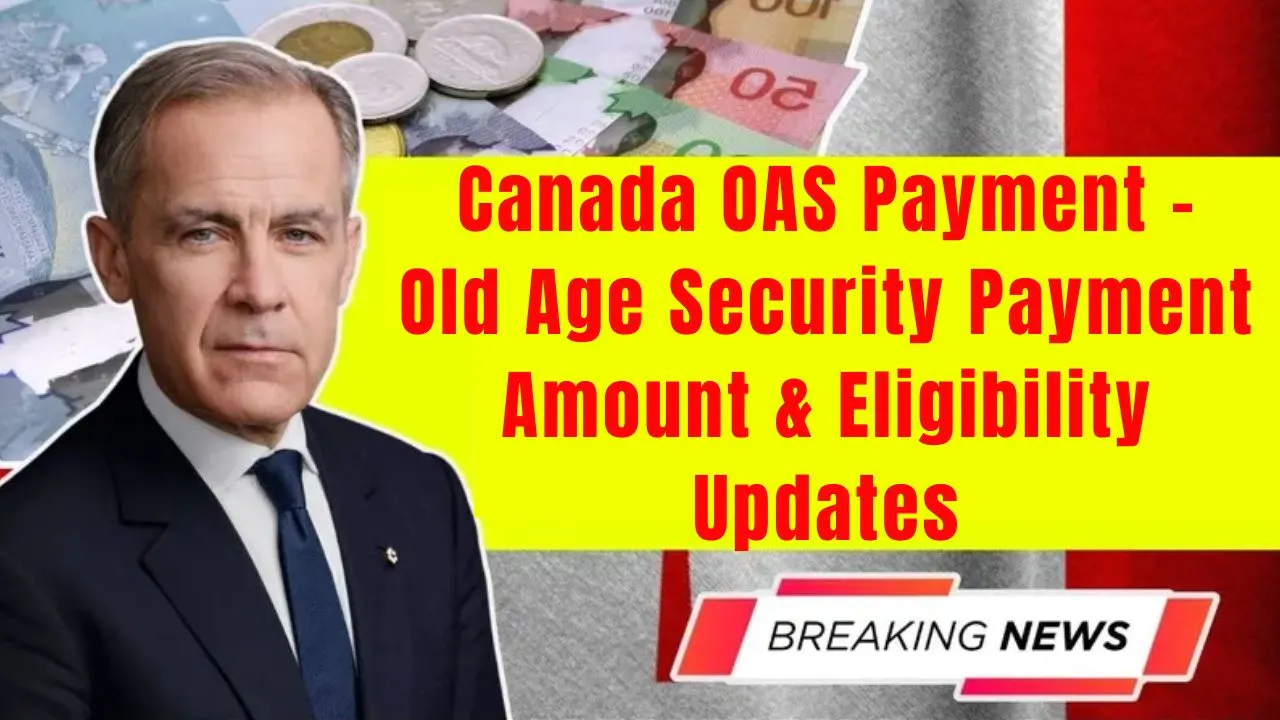If you’re paying attention to retirement income in Canada, Canada OAS Payment is something you really should understand. It’s one of the pillars of support for seniors, and changes to it can directly affect how comfortable your later years are. I’ll walk you through the latest updates, how much you might receive, and what you need to be eligible.
In the next part, I’ll dive deeper into Canada OAS Payment specifies what the current rates are, who qualifies, how income affects it, and what recent tweaks have been made. You’ll get clarity on key rules and numbers so you can see exactly where you stand.
Understanding The Importance Of Canada OAS Payment
The Canada OAS Payment plays a major role in supporting seniors during retirement, especially for those with limited savings or income. It’s not just a government benefit, it’s a monthly lifeline that helps cover basic living costs like groceries, bills, and housing. Whether you’re planning to retire soon or helping a loved one prepare, knowing how this payment works is crucial. From how much you receive to how income can affect your payout, understanding the ins and outs of the Canada OAS Payment ensures you’re not missing out on money you’re entitled to. Let’s explore the key details that matter most.
Canada OAS Payment: Rates, Eligibility & Key Rules
Here’s a snapshot of the critical details for the Canada OAS Payment program as of 2025:
| Feature | Current Detail / Update |
| Age to qualify | 65 years or older is the basic threshold |
| Full years of residence (for full pension) | 40 years of residence in Canada after age 18 |
| Partial pension rule | If you lived in Canada between 10 and 39 years after 18, your pension is prorated |
| Maximum monthly (65‑74 yrs) | $727.67 (2025) |
| Maximum monthly (75+ yrs) | $800.44 (2025) |
| Quarterly adjustments | Rates reviewed Jan, Apr, Jul, Oct via CPI (never go down) |
| Income “clawback” threshold | If net world income exceeds set limits, part or all OAS is recovered |
| Deferral option | You can delay OAS up to age 70, increasing your monthly amount (0.6% per month) |
| Related benefits | GIS (Guaranteed Income Supplement), Allowance, Allowance for Survivor |
Who Qualifies For OAS & How The Canada OAS Payment Works
To get the Canada OAS Payment, you must meet a few criteria. First, you need to be 65 or older and be a Canadian citizen or legal resident by the time of approval. You also need to have lived in Canada for at least 10 years after age 18 if you’re applying while living in Canada.
If you’re living outside Canada when applying, you generally need at least 20 years of residence after 18 to maintain eligibility.
The number of years you lived in Canada matters a lot. If you have 40 years (or more) of residence post‑18, you’re eligible for the full pension. If not, your pension is prorated: (Years lived ÷ 40) × full OAS amount.
One thing to highlight: OAS is not based on how much you worked or how many contributions you made (unlike CPP). You don’t lose eligibility just because you didn’t have certain jobs.
How Much Can You Get From The Canada OAS Payment
Your Canada OAS Payment amount depends on your age bracket, years of residence, and income level because of clawbacks.
- For ages 65 to 74, the maximum is $727.67 per month in 2025.
- For those 75 and older, the max is $800.44 per month due to the permanent 10% bump introduced for seniors 75+ in 2022.
If your residency after 18 is fewer than 40 years, your amount is scaled down (prorated).
You can also choose to delay your OAS up to age 70. Each month deferred adds 0.6% to your monthly payment up to a maximum of 36%.
But note: While you defer, you cannot get GIS or the Allowance because those depend on being a current OAS recipient.
Adjustments, Clawbacks & Income Effects
Quarterly Adjustments
The Canada OAS Payment is adjusted quarterly (January, April, July, October) based on changes in the Consumer Price Index. If inflation rises, payments go up; if it falls, payments don’t go down. For example, for October–December 2025, OAS benefits increased by 0.7%.
Income Clawback Or Recovery Tax
If your net world income exceeds a threshold, your OAS may be partially or fully “clawed back.”
In 2025, for those ages 65–74, if your income surpasses around $148,451, your OAS could be fully eliminated. For those 75+, the threshold is slightly higher. Every dollar over the threshold means 15 cents of OAS is repaid.
Related Benefits: GIS, Allowance & Survivor Allowance
The OAS program includes a few extra benefits for low-income seniors:
- Guaranteed Income Supplement (GIS): A tax-free monthly benefit for low-income seniors who already receive OAS. Your income and marital status affect how much you get.
- Allowance: For people aged 60–64 whose spouse or partner gets GIS.
- Allowance for the Survivor: For widowed, low-income individuals aged 60–64 with no remarriage.
These benefits are income-tested and updated in July each year based on your previous year’s income. If you defer your Canada OAS Payment, you are ineligible for GIS and Allowance during that period.
Recent Updates & What’s Coming
- Since July 2022, seniors aged 75 and over now receive a permanent 10% increase to their OAS pension.
- For the October–December 2025 period, OAS rates rose by 0.7% due to CPI adjustments.
- Some reports suggest that starting in October 2025, the maximum OAS for ages 65–74 may be adjusted upward to $740 per month, and for 75+, around $814 per month.
- Rumors about one‑time “bonus” OAS payments have been circulating, but as of now, no official confirmation exists for many such claims.
Keep an eye on official government releases, these rates and thresholds can shift.
When & How You Get Your Canada OAS Payment
You usually start receiving your OAS payment the month after you turn 65, provided you’ve applied or are automatically enrolled.
If you delay your start, that can boost your payment, but you won’t get retroactive benefit for months you voluntarily deferred.
OAS payments are typically made via direct deposit in Canada, and for some other countries via cheque. In 2025, OAS payments are generally issued in the last week of each month. Examples: July 29, September 25, October 29.
Should You Defer Or Take It Early
Deciding when to start Canada OAS Payment depends on your life, finances, and health.
Pros of deferring:
- You get a higher monthly amount 0.6% more per month deferred, up to 36%.
- If your income is high, the clawback might reduce your benefit anyway, so a higher base might help.
Cons of deferring:
- You lose eligibility for GIS or Allowance while you wait.
- If you have limited life expectancy, the total you receive might end up lower.
- You might have to manage income gaps during the deferral period.
In many cases, waiting is worth it, but that depends on your circumstances, health, other incomes, etc.
FAQs
Yes. You may still get a partial Canada OAS Payment if you’ve lived in Canada at least 10 years after age 18. Your benefit amount is prorated.
Yes. The Canada OAS Payment counts as taxable income. If your overall income is high, you may face a recovery tax clawback.
Many seniors are auto‑enrolled. But if you don’t get notified, you should apply about 6 months before turning 65.
GIS (Guaranteed Income Supplement) is a non‑taxable boost for low-income OAS recipients. It depends on your income, and you must be receiving OAS to get it.
No. While payments can go up with inflation, they won’t decrease even if the cost of living falls.


